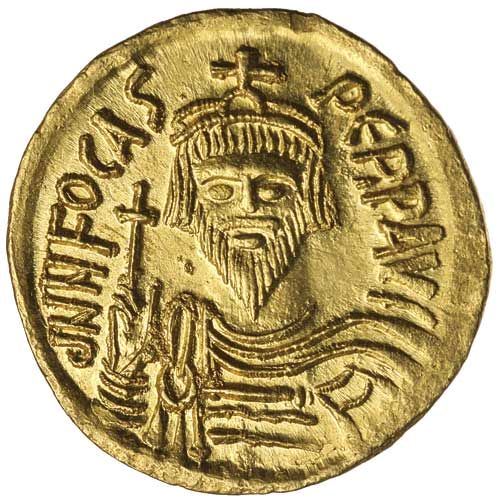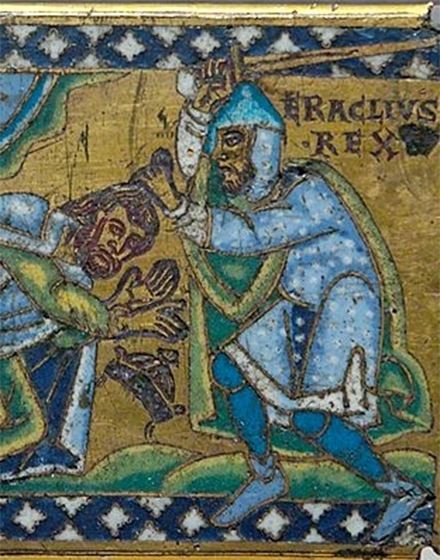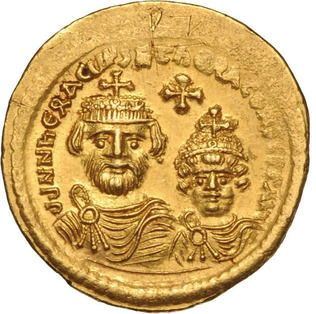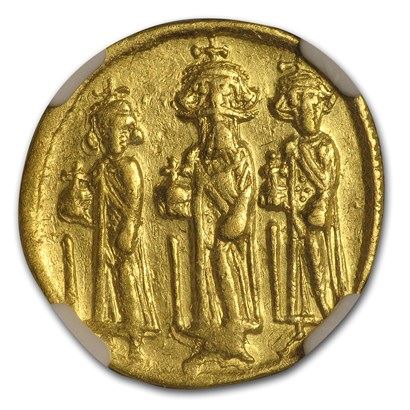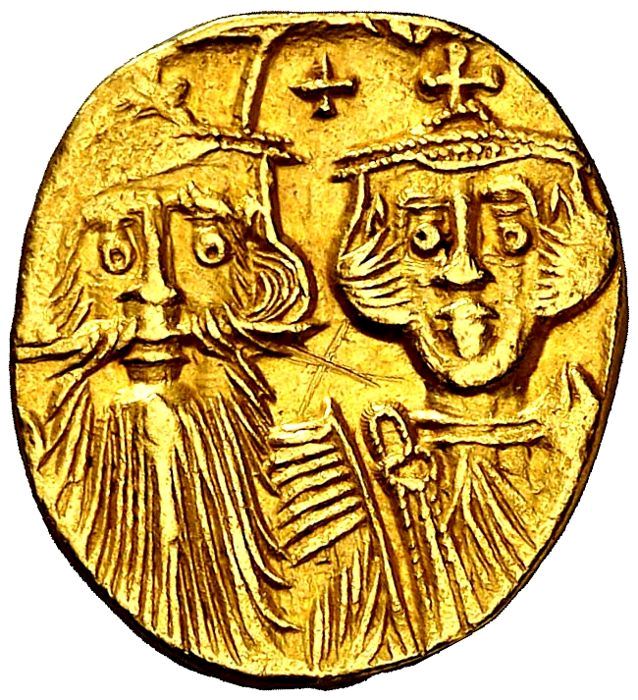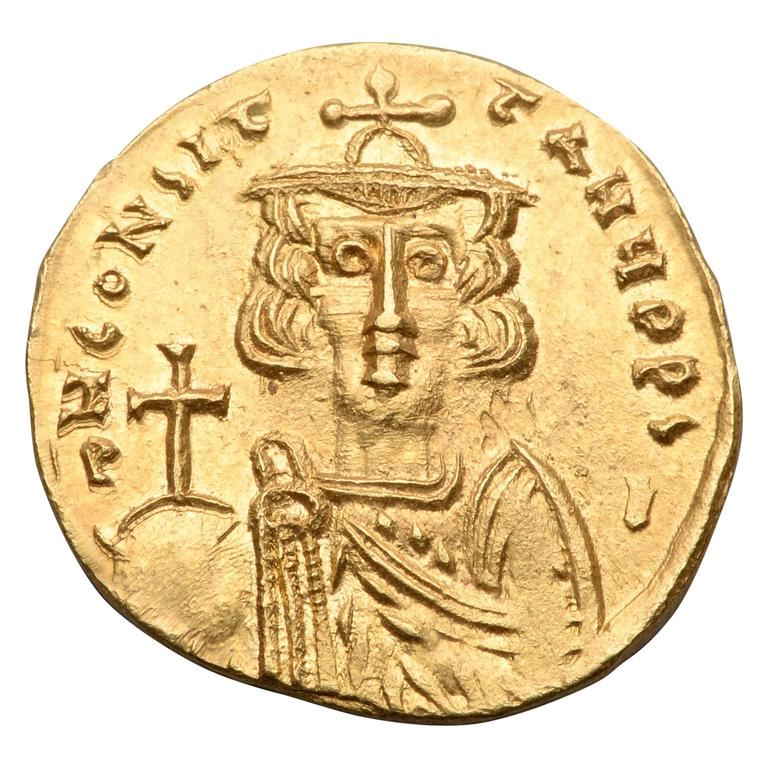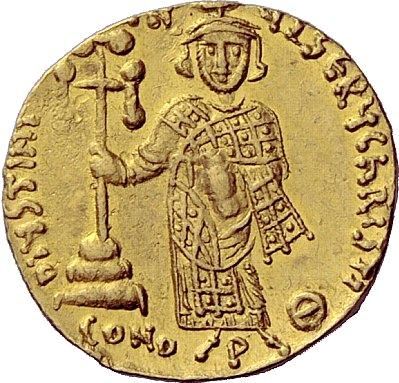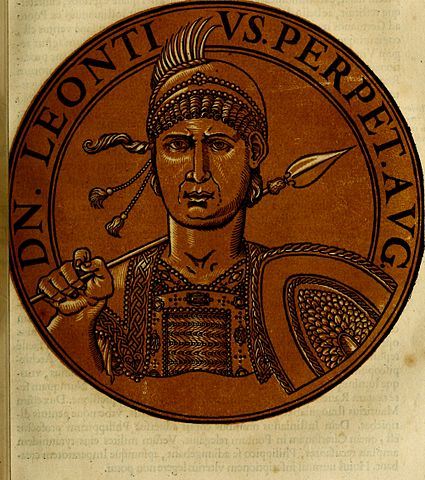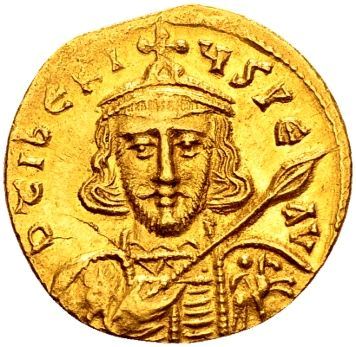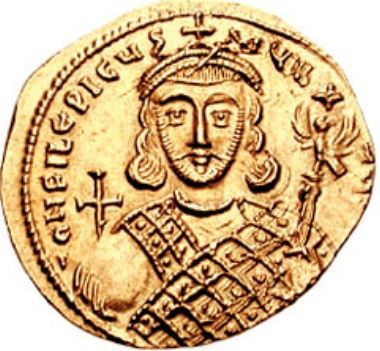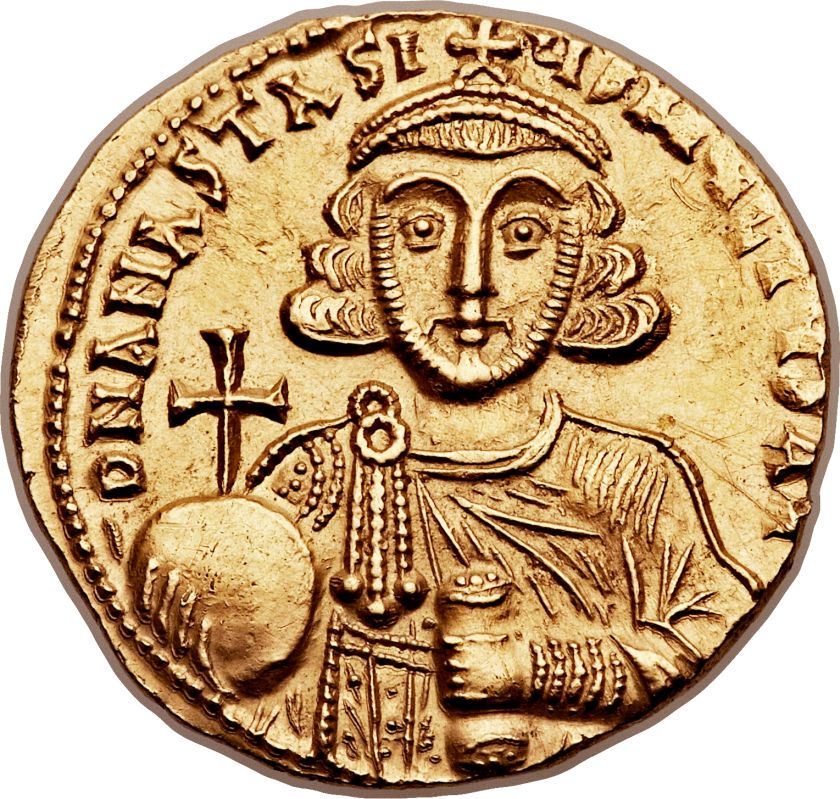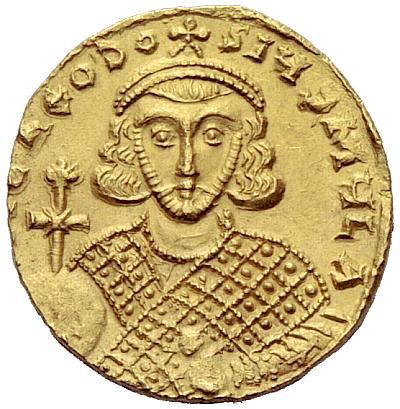The period between 602 and 717 is one of great upheaval. While Phocas did not last long on the throne, the Heraclian Dynasty did not succeed in stabilizing the realm. Instead, a series of invasions and plagues depopulated the cities and led to extensive territorial losses.
At the beginning of the dynasty, the Empire was still recognizable as the Eastern Roman Empire, dominating the Mediterranean and harbouring a prosperous Late Antique urban civilization. By the end, the realm had been reduced to little more than the capital, Anatolia, and some scattered territories in Greece and Italy.
The last two decades of this era were dominated by a rapid succession of emperors, all of whom were inefficient in turning back the Arab conquest. This period is sometimes referred to as ‘20 years of anarchy’. The period ends with the ascension of Leo III ‘the Isaurian’, who would turn back the Arabs in 718 – but who also banned religious images, kickstarting a religious division which would come to dominate Byzantine politics for more than a century.
At the beginning of the dynasty, the Empire was still recognizable as the Eastern Roman Empire, dominating the Mediterranean and harbouring a prosperous Late Antique urban civilization. By the end, the realm had been reduced to little more than the capital, Anatolia, and some scattered territories in Greece and Italy.
The last two decades of this era were dominated by a rapid succession of emperors, all of whom were inefficient in turning back the Arab conquest. This period is sometimes referred to as ‘20 years of anarchy’. The period ends with the ascension of Leo III ‘the Isaurian’, who would turn back the Arabs in 718 – but who also banned religious images, kickstarting a religious division which would come to dominate Byzantine politics for more than a century.
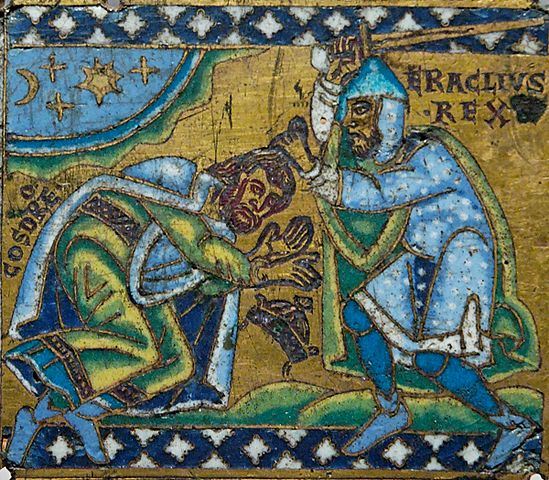
Flavius Phocas Augustus was Byzantine Emperor from 602 to 610. The early life of Phocas is largely unknown, however he rose to prominence in 602, as a leader in the revolt against Emperor Maurice. He captured Constantinople and overthrew Maurice on 23 November 602, and declared himself as Byzantine Emperor on the same day.
Phocas deeply distrusted the elite of Constantinople, and there...
Phocas deeply distrusted the elite of Constantinople, and there...
Flavius Heracles Augustus was Byzantine emperor from 610 to 641. His rise to power began in 608, when he and his father, Heraclius the Elder, the viceroy of Africa, led a revolt against the unpopular usurper Phocas.
Heraclius's reign was marked by several military campaigns. He fought the Sasanid Empire from his ascension in 610, and avoided total defeat before driving the Persians from...
Heraclius's reign was marked by several military campaigns. He fought the Sasanid Empire from his ascension in 610, and avoided total defeat before driving the Persians from...
Constantine III was Byzantine emperor for 3 months in 641, making him the shortest reigning Byzantine emperor. He was the eldest son of the Byzantine Emperor Heraclius and his first wife Eudokia.
Constantine became senior Emperor when his father died in 641. He reigned together with his younger half-brother Heraklonas, the son of Martina. His supporters feared action against him on the ...
Constantine became senior Emperor when his father died in 641. He reigned together with his younger half-brother Heraklonas, the son of Martina. His supporters feared action against him on the ...
Heraklonas was Byzantine emperor for a short time in 641, following the death of his father Heraclius. He ruled jointly with his half-brother, Constantine III.
After Constantine died of tuberculosis in April/May 641, Heraklonas became sole emperor, under the regency of his mother due to his young age, usually dated from April/May – September/October 641, when he was overthrown by Valen...
After Constantine died of tuberculosis in April/May 641, Heraklonas became sole emperor, under the regency of his mother due to his young age, usually dated from April/May – September/October 641, when he was overthrown by Valen...
Constans II was emperor of the Byzantine Empire from 641 to 668. He was the last emperor to serve as consul, in 642. Constans is a diminutive nickname given to the Emperor, who had been baptized Herakleios and reigned officially as Constantine. The nickname established itself in Byzantine texts and has become standard in modern historiography.
Under Constans, the Byzantines completely w...
Under Constans, the Byzantines completely w...
Constantine IV was Byzantine Emperor from 668 to 685. His reign saw the first serious check to nearly 50 years of uninterrupted Islamic expansion.
After his father's assassination, the new emperor immediately faced a war with Caliph Muawiyah I. Chalcedon was conquered, then Carthage and Sicily in 669. Cyzicus in 670, and Smyrna and other coastal cities in 672, before sending a large fl...
After his father's assassination, the new emperor immediately faced a war with Caliph Muawiyah I. Chalcedon was conquered, then Carthage and Sicily in 669. Cyzicus in 670, and Smyrna and other coastal cities in 672, before sending a large fl...
Justinian II was the last Byzantine Emperor of the Heraclian Dynasty, reigning from 685 to 695 and again from 705 to 711. He was an ambitious and passionate ruler who was keen to restore the Roman Empire to its former glories, but he responded poorly to any opposition to his will and lacked the finesse of his father, Constantine IV.
Consequently, he generated enormous opposition to his ...
Consequently, he generated enormous opposition to his ...
Leontios was Byzantine emperor from 695 to 698. Little is known of his early life, other than that he was born in Isauria.
He was given the title of patrikios, and made Strategos of the Anatolic Theme under Emperor Justinian II. He led forces against the Umayyads during the early years of Justinian's reign, securing victory and forcing the Umayyad caliph to sue for peace.
In ...
He was given the title of patrikios, and made Strategos of the Anatolic Theme under Emperor Justinian II. He led forces against the Umayyads during the early years of Justinian's reign, securing victory and forcing the Umayyad caliph to sue for peace.
In ...
Tiberios III was Byzantine emperor from 698 to 21 August 705. Although his rule was considered generally successful, especially in containing the Arab threat to the east, he was overthrown by the former emperor Justinian II and subsequently executed.
Tiberius was a Germanic naval officer from the region of Pamphylia and originally named Apsimar. He participated in the failed campaign to...
Tiberius was a Germanic naval officer from the region of Pamphylia and originally named Apsimar. He participated in the failed campaign to...
Philippikos was Emperor of the Byzantine Empire from 711 to 713. Philippicus was originally named Bardanes, and is often referred to as Philippikos Bardanes.
Philippikos seized power when he successfully incited the Khazars to besiege Constantinople in opposition to Justinian II, who had returned to the throne no less harsh than he had left if when he was first ousted by Tiberios III. ...
Philippikos seized power when he successfully incited the Khazars to besiege Constantinople in opposition to Justinian II, who had returned to the throne no less harsh than he had left if when he was first ousted by Tiberios III. ...
Anastasios II was the Byzantine Emperor from 713 to 715. He was originally named Artemius (Ἀρτέμιος) and had served as a bureaucrat and Imperial secretary (asekretis) for his predecessors. After the Opsician army in Thrace had overthrown Emperor Philippikos Bardanes, they acclaimed Artemius as Emperor.
Soon after his accession, Anastasius II imposed discipline on the army and executed t...
Soon after his accession, Anastasius II imposed discipline on the army and executed t...
Theodosios III was Byzantine Emperor from 715 to 25 March 717. He was a financial officer and tax collector in the southern portion of the theme of Opsikion, before he was chosen as emperor by rebellious troops.
He did not readily accept this choice and, according to the chronicler Theophanes the Confessor, even attempted to hide in the forests near Adramyttium. Eventually he was found ...
He did not readily accept this choice and, according to the chronicler Theophanes the Confessor, even attempted to hide in the forests near Adramyttium. Eventually he was found ...

